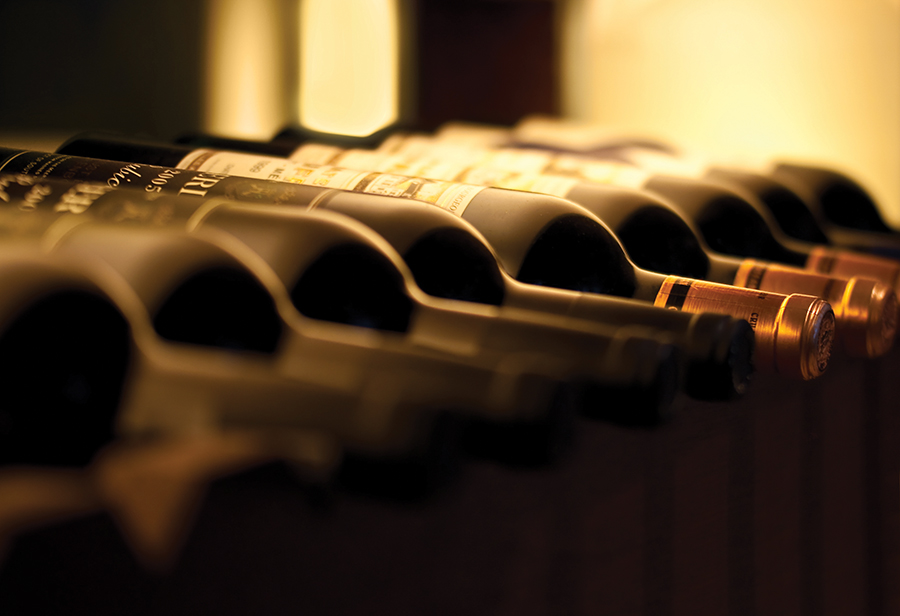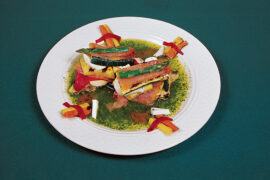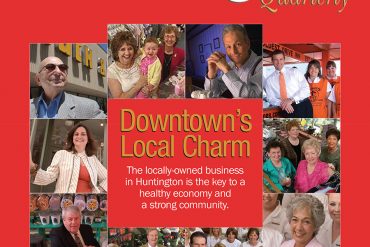By Matthew Debord
HQ 96 | Winter 2017
In the wine world, they call them “trophies”-legendary names that collectors covet and are willing to pay thousands of dollars to own. These wines often wind up in cellars, displayed rather than drunk or flipped after a few years to an even more covetous collector with a bigger bank account.
As more people have learned about fine wines over the past few decades, the appetite for trophy wines, both new and old, has exploded. An unfortunate consequence is that the legends sometimes overtake reality. There are plenty of big-name wines that are well worth the money and time required to acquire them. But there are also big-name wines that are either risky or don’t live up to the hype. But before we get to these “problem trophies,” let’s run through some wines of reputation that thoroughly live up to their billings.
Among the most collectible French wines from the Bordeaux region, perhaps the best bet for your money, is Château Latour. It’s one of the five legendary “first growth” estates whose wines all sit atop the 19th classification of French viticulture. Latour is located on the Left Bank of the Gironde River, where the wines are primarily made up of Cabernet Sauvignon. Built to age, they can go for half a century or more, if properly stored. The 2015 vintage will set you back $600-700. A lot, but worth it.
Another very safe bet is a wine now identified by the vineyard where its grapes come from, but for decades was simply known as Robert Mondavi Reserve Cabernet Sauvignon (the To Kalon Vineyard designation has been added in recent years). This was the first good wine I ever tried, from the 1985 vintage. A magnificent example of the Napa Valley style, and a relative bargain at just over $100.
Add another $100 and you get to Joseph Phelps Insignia, another mainly Cabernet Napa Valley wine that never fails to disappoint. In fact, this is the wine I most commonly recommend as a “special occasion” or gift wine. The style is a bit richer and heavier than the Mondavi Reserve Cab, which has always sought to deliver a more French experience.
What about the big-name duds? Well, once you get to be a big name, the problem isn’t so much making an overtly bad wine-it’s selling wines of uneven quality for the price.
The biggest offender on this score has always been Burgundy, with its complex matrix of wine growers and producers, working with the temperamental Pinot Noir grape. The biggest name is Domaine de la Romanée-Conti, often shortened to just “DRC.” Although the wines can be spectacular, they can also be wildly expensive, due to very low levels of production. Price tags can hit $10,000. Okay, if you already have three Ferraris, why not? Otherwise, buy a whole lot of Château Latour instead.
On a general note, as I’ve gotten older, I’ve grown less fond of the so-called California “cult wines” or “cult Cabernets,” which are strictly allocated to customer lists and go for a really big, post-1970s style of blockbuster winemaking. I think it’s fun to sample one of these wines from to time-Screaming Eagle is perhaps the best known-but otherwise, more traditional Napa names strike my fancy to a greater degree. Don’t get in line for the chance to spend $2,000 on a bottle.
Finally, big-name Champagnes, while reliably excellent, don’t do that much for me. Make no mistake, of all the wines of France, the finest Champers are the absolute best way to avoid being disappointed by dropping over $50 on some bubbly. But there’s more to Champagne than Veuve Clicquot. You lose out by not exploring some of the more offbeat names-two of my favorites are Laurent-Perrier and Bruno Paillard. They might not have the nailed-down, never-fail corporate style of the big house, but they’re more fun.
A closing remark: big-name wines are, of course, big for a reason; and unlike, say, 40 years ago when you could end up with a really bad expensive wine in your glass, these days the big names tend to come through, but at a titanic price point.
But improvements in winemaking and viticulture have lifted all boats. So while a big-name wine might ultimately disappoint, there are countless wines that you can pick up for under $100 that are what I sometimes think of as “small” big names. A fantastic example is the Estate Pinot Noir from an Oregon winery, Benton Lane. It’s $30, and it never fails to satisfy. The quality is on par with a French Burgundy that costs three times as much (and in some vintages, far more than that). It’s a wine of delicacy, but also a sort of quiet power.
Take that, big-name wines of the world!





